This post was inspired by the anime I'm currently watching, Fullmetal Alchemist.
FMA has a really interesting setting where a highly rational and rule-bound magic system (alchemy) coexists with early-20th-century technology (trains, telephones) and there's a lot of tension, intrigue, conspiracy, memory of historical atrocities, threats of oncoming war, etc. etc.
I guess the setting is that non-specificly quasi-European place that a lot of anime is set. But, you know, I wasn't particularly thinking of it as being literal Europe until the characters from Xing showed up.
What's Xing? Well...
The characters from Xing have a pet panda.
And Chinese clothing and hairstyles. And Chinese-sounding names.
And it's located to the east across a great desert.
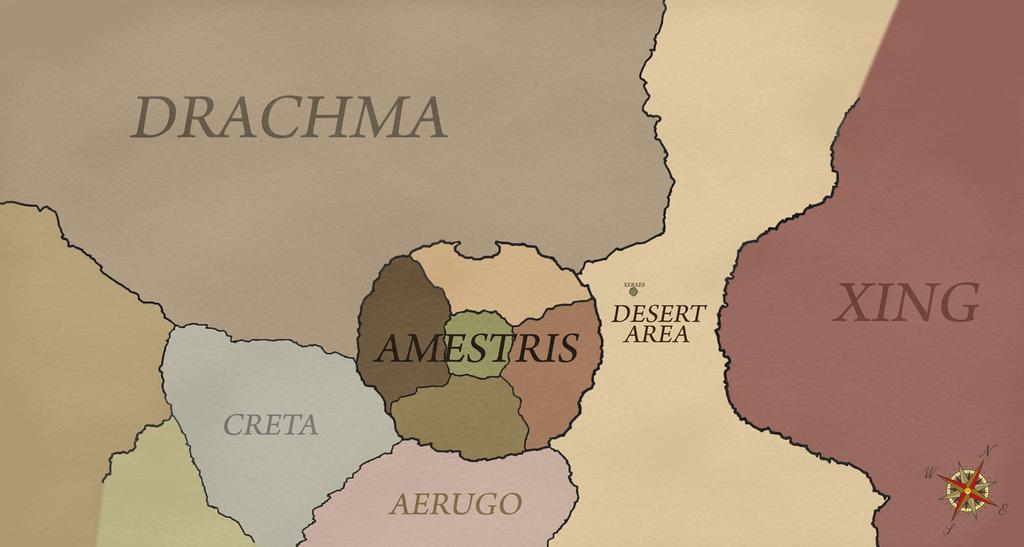
And they also have... ninjas? And an emperor? with a zillion concubines? This is getting kinda weird.
And the main guy from Xing never opens his eyes all the way... it's like he's... squinting all the time oh yikes
(if you're like "this is made by Japanese people, how could they be making orientalist stereotypes of China?" then... ooh do I have some bad news for you about Japan)
Revealing that far to the east, across a desert, is China a place suspiciously similar to China... it immediately forces us to recontextualize your fantasy setting as literal Europe and start making uncomfortable inferences about what real-world countries everything else corresponds to.
And the thing is this happens all the time. It got me thinking about how many fantasy settings have, far to the east, across a great desert, some kind of not-China.
Let's take a tour of shitty not-Chinas attached to not-Europe fantasy settings, and make fun of how unimaginative they are!
Warhammer World
Prior to the Age of Sigmar reboot, the setting of the Warhammer fantasy wargame was caled "The Old World" and it looked like this:
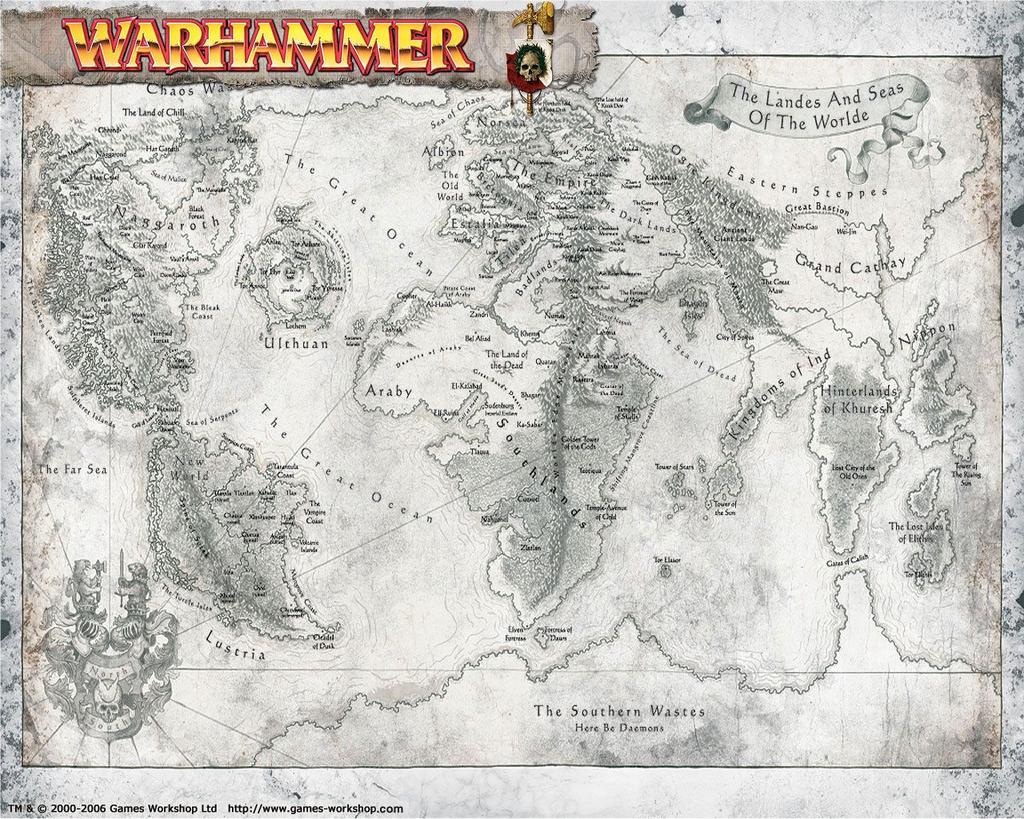
they didn't even come up with a new name for their not-China, they just call it "Cathay" like they're Marco Polo or something! If you look closely at the map, it's even got a Great Wall (sorry "Great Bastion") on the northern border.
Notice they also have "Ind", "Nippon", "Araby"... they're really uncreative when it comes to names outside of not-Europe.
Fantasy-Arabia if anything gets even more of a raw deal than fantasy-China... "Araby" here gets shoved off into the Sahara; (you can imagine the map creator saying "We don't need TWO deserts, let's just combine those")
South America gets to be "Lustria", the Mesoamerican-themed lizardman empire. A lot of these fantasy worlds are like "We need some place for our Indiana Jones jungle adventure land" and since they have no imagination, they stick it where I don't think they meant to imply that Mesoamerican cultures were not human? But it would be a lot easier to not imply that if you weren't setting up a 1-to-1 correspondence to real-world countries, wouldn't it?
North of Lustria, instead of a North America analogue there's "Naggaroth", a volcanic hellscape ruled by Dark Elves. This is almost a relief, in that we're spared hearing their "take" on Native American cultures.
Even their not-Europe has "Albion" (literally a poetic name for England) and I bet you anything "Norsca" is where you would find their fantasy not-Vikings
Golarion
This is the Pathfinder (a D&D offshoot) campaign setting. The most detailed part is the area around the Inner Sea. A medi... terra... nean... sea, you might call it.
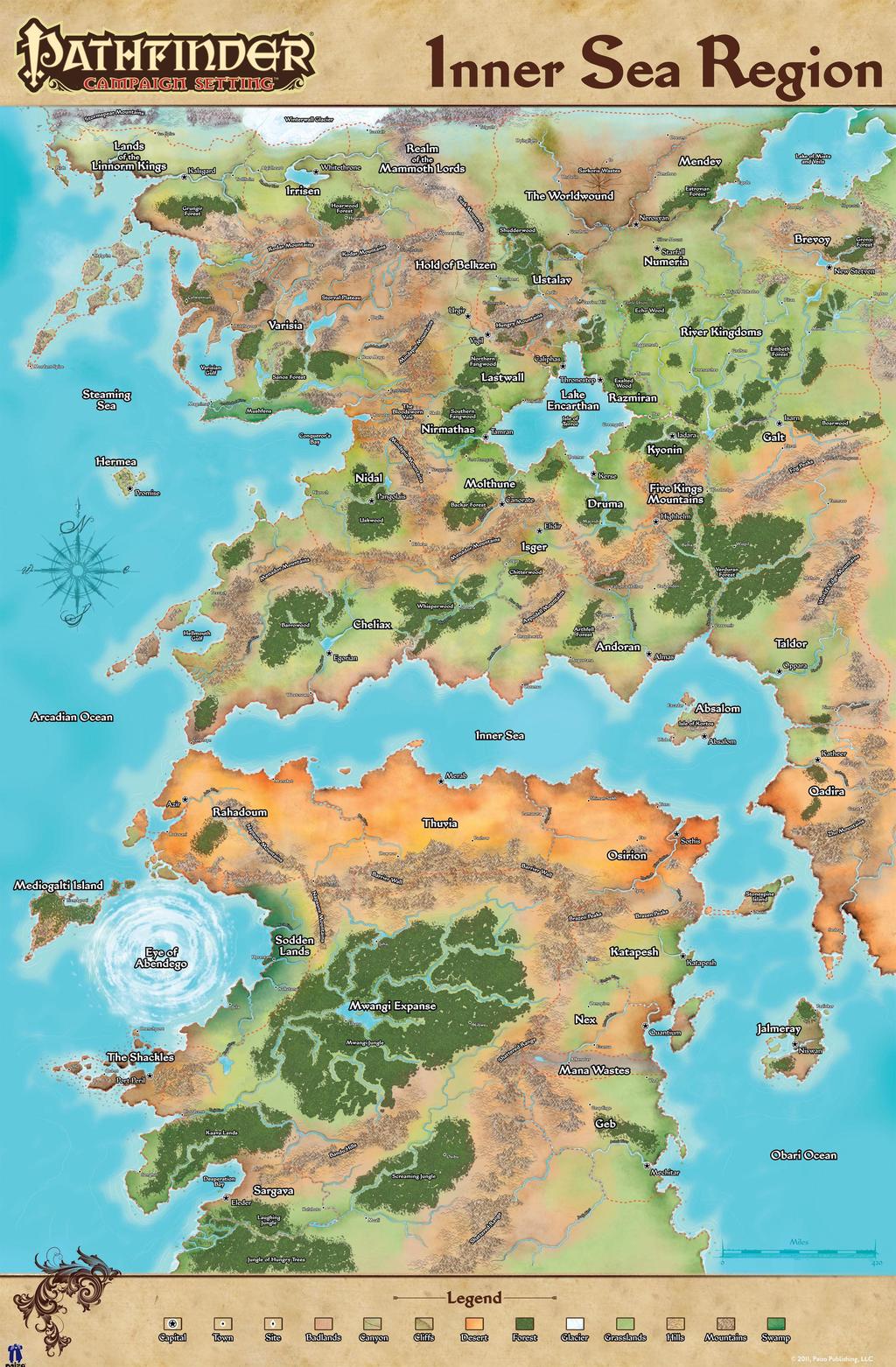
But zooming out, things are not so good:
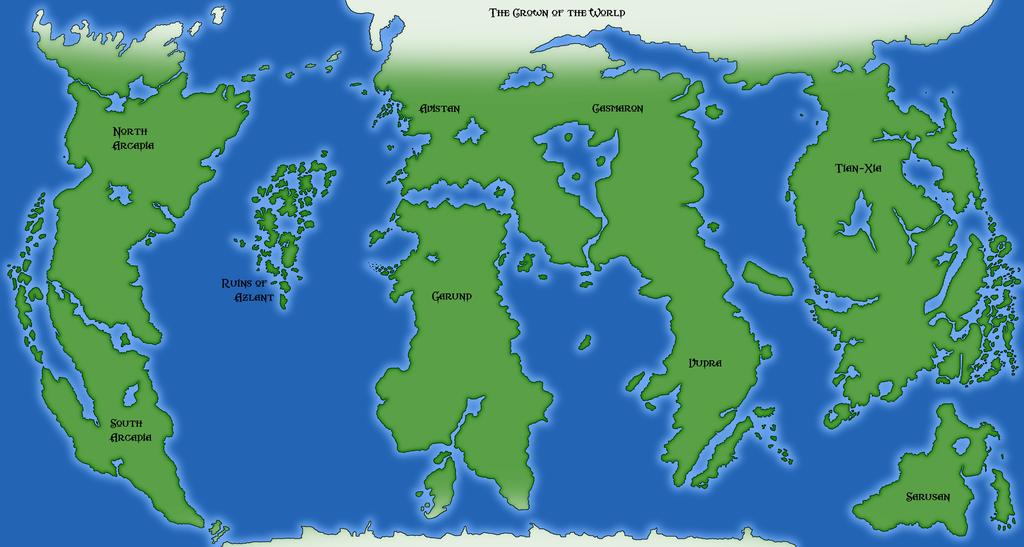
(There's a huge detailed map here that's too big to embed, but you can click through if curious.)
Their not-Arabia is the "Empire of Kelesh", their not-India is "Vudra", and their not-China is "Tian Xia". just like Warhammer, they didn't even think of a new name -- "Tian Xia" meaning "(all) under heaven" i.e. "the whole world" is literally a name used in ancient Chinese literature.
And if we scroll over to not-Africa and the not-Americas... (sorry "North Arcadia" and "South Arcadia") hoo boy, somebody really started running out of ideas, or they were on a tight deadline. "Kalhari desert" "Aconcagua mountains" these are only one letter away from the real place names.
The further away you get from the not-mediterranean the more it's just a recreation of Earth, from memory, by a kid who failed geography.
Song of Ice and Fire
While Westeros is quite a well-developed Not-Europe with a lot of unique character, multiple competing power centers of society, and a unique geography that factors heavily into the strategy of those trying to rule it... Essos is not so much.
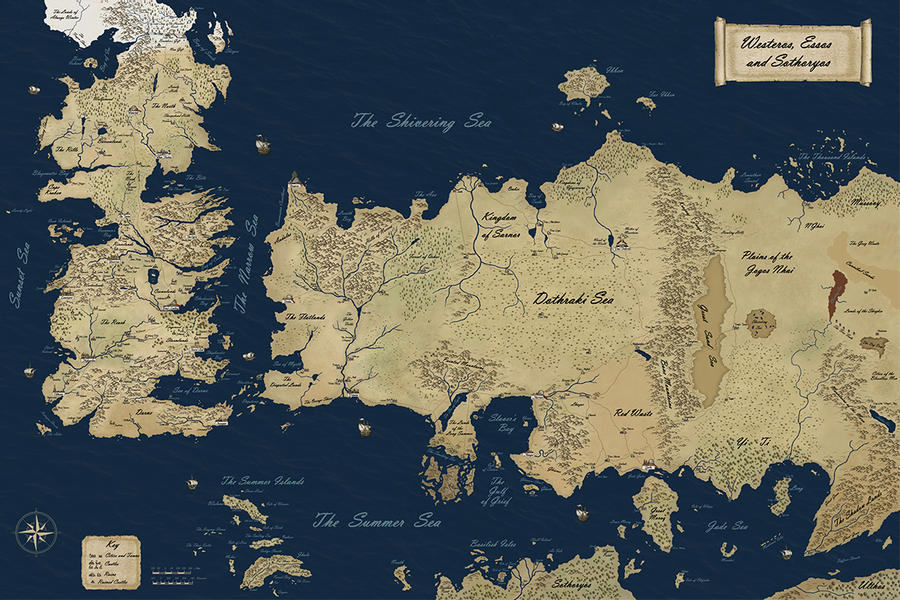
G.R.R.Martin's not-China is called "Yi Ti, on the Jade Sea". I could go on about the cliche of fantasy authors using "Jade" to signify China but whatever, Yi Ti has never yet featured in the story; GRRM is a lot more interested in his not-Mongols, the Dothraki.
The definitive takedown of the Dothraki, and how much less logical and less interesting their culture is than actual Mongol culture, is by Bret Devereaux at A Collection of Unmitigated Pedantry and you should definitely go read it.
I liked GRRM's world a lot better before there was an "official" map for anything beyond Westeros. When it was just a lot of names signifying "the wider world beyond the petty concerns of the Seven Kingdoms" and you could imagine that half the stuff you heard about it was exaggerated travelers' tales or just plain wrong.
Now that there's an official map of Essos, it... kind of sucks. I don't like this map at all. The official Essos isn't interesting. It's a dumping ground for random Cool Shit. It reduces all the non-Westeros cultures to one long, boring, left-to-right strip mall of arbitrary exotic sights for the tourist Daenerys to gawk at.
Faerun
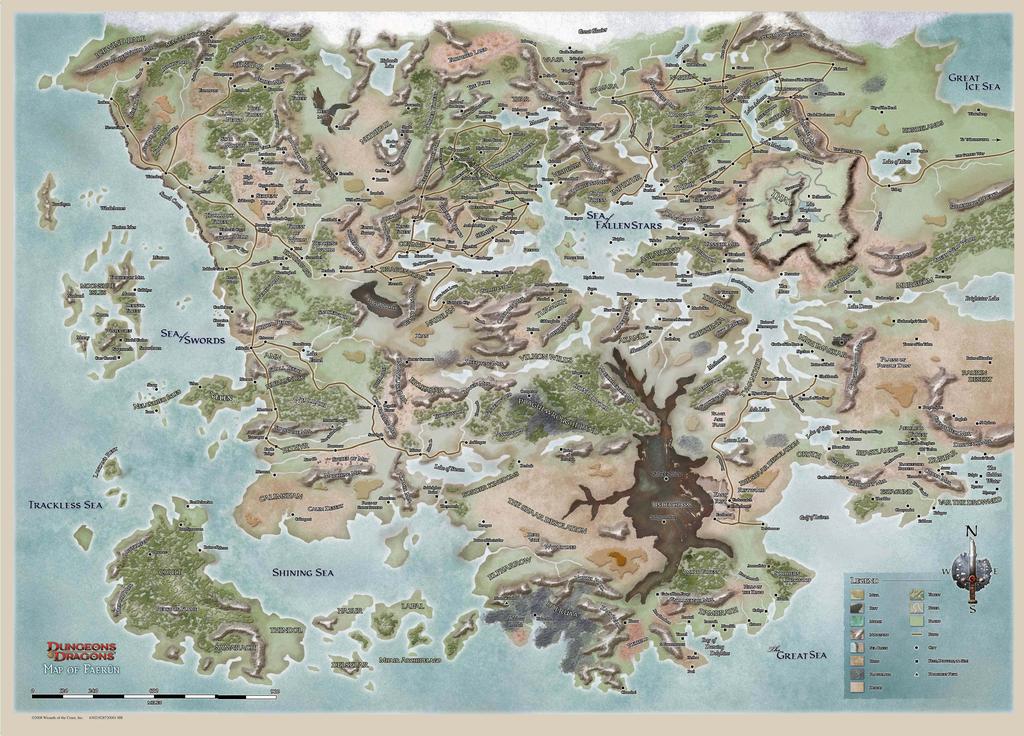
Hmmm at first glance Faerun (from the D&D Forgotten Realms setting) doesn't seem to have a not-China in it. But Faerun is just one part of the larger world of Toril. Let's zoom out...
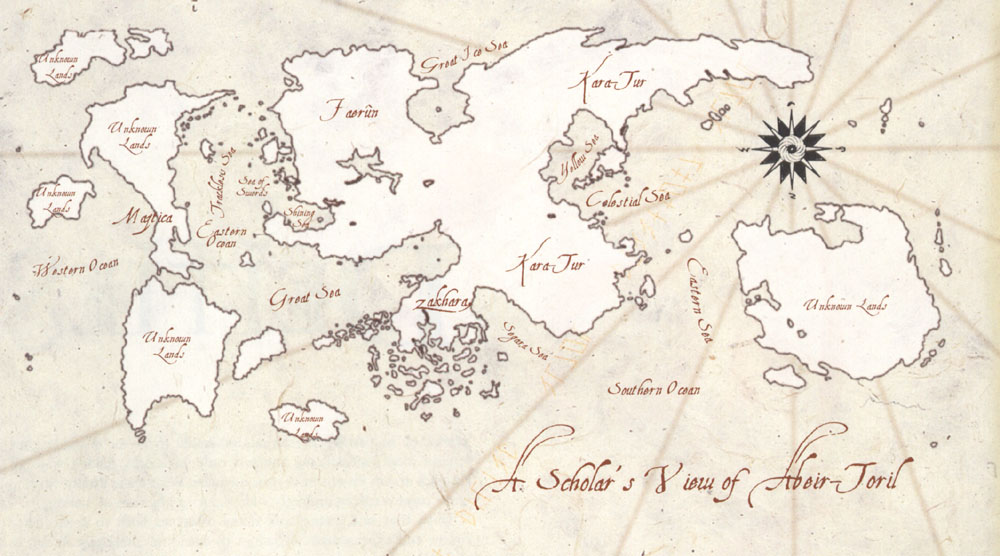
If there's one rule I've learned, it's that you can always find not-China by looking for the words "Jade", "Celestial", or "Dragon". I see there's a Celestial Sea here, so let's zoom in on the continent next to it, "Kara-Tur". What's Kara-Tur's deal?
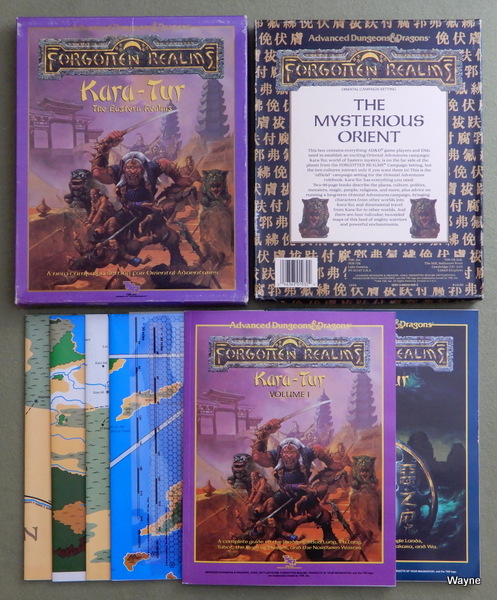
Jackpot. All those random hanzi arranged into a wallpaper, mmm, yes. (Fun fact: all those characters are pronounced "fu", which tells us that the designer just opened a Chinese character dictionary to the "fu" page and started copy-pasting.)
You notice that when a fantasy setting has a "knights and chivalry" country, it's never represented by a wallpaper of random French words, is it?
And that's the thing: what parts of your world get to be a well-developed setting with a character of its own that draws on historical stuff.... and what parts are just grab-bags of signifiers representing "ooh, exotic" ?
(Toril also has "Maztica", a not-Mesoamerica. I don't think theirs is full of lizard people, though.)
Now for some counter-examples, which don't have Chinas per se but still have some form of Orientalism going on:
Immoren
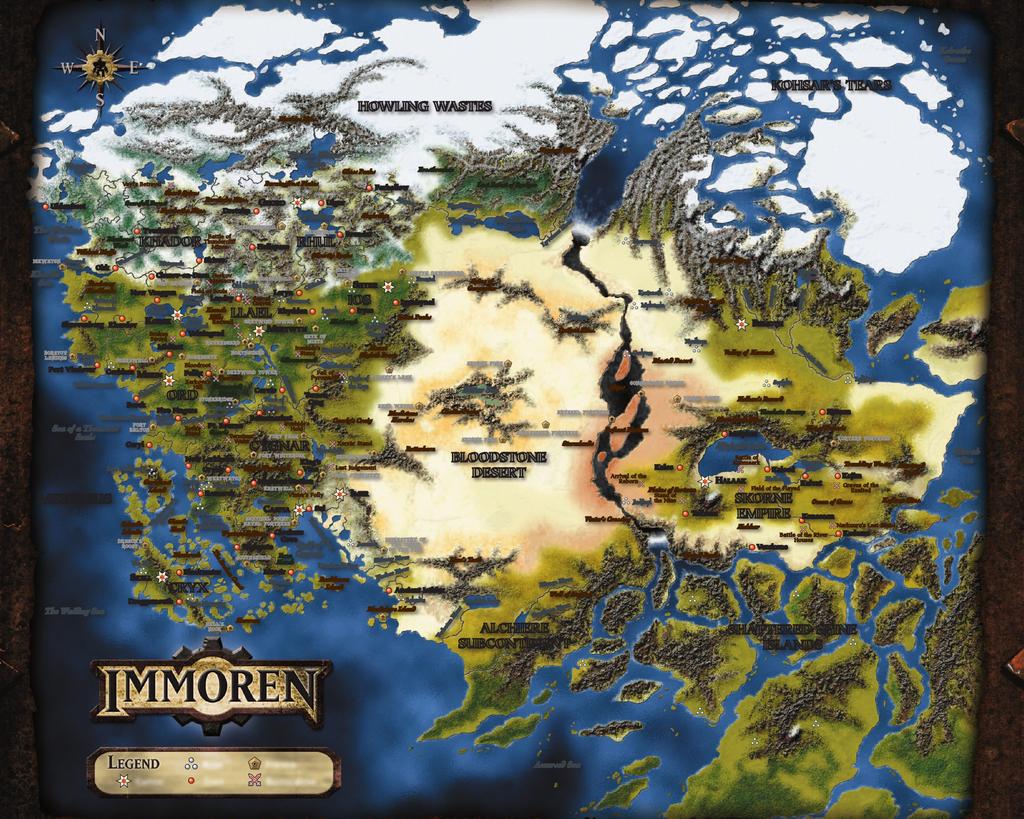
This is the setting of Warmachine/Hordes, my current favorite tabletop wargame.
They don't have a fantasy China. But they do have, far to the east from their psuedo-Europe, on the other side of a Great Desert...
The Skorne Empire: a race of nosferatu-looking dudes who do weird soul magic and torture baby elephants. They fight in phalanxes and have cyclopses, so maybe they're Greek actually? Their animated statues have a kind of Egyptian mummy vibe but they also have Japanese-style vertical banners?
So Skorne fails to be a not-China; instead it's a cultural mish-mosh that manages to avoid being offensive to any real-world culture mainly via how confused it is. But it's still vaguely Orientalist in the sense of being based in fear of a giant, unstoppable, culturally alien, despotic empire to the East that's waiting to swoop in and conquer you.
And speaking of that...
Middle-Earth
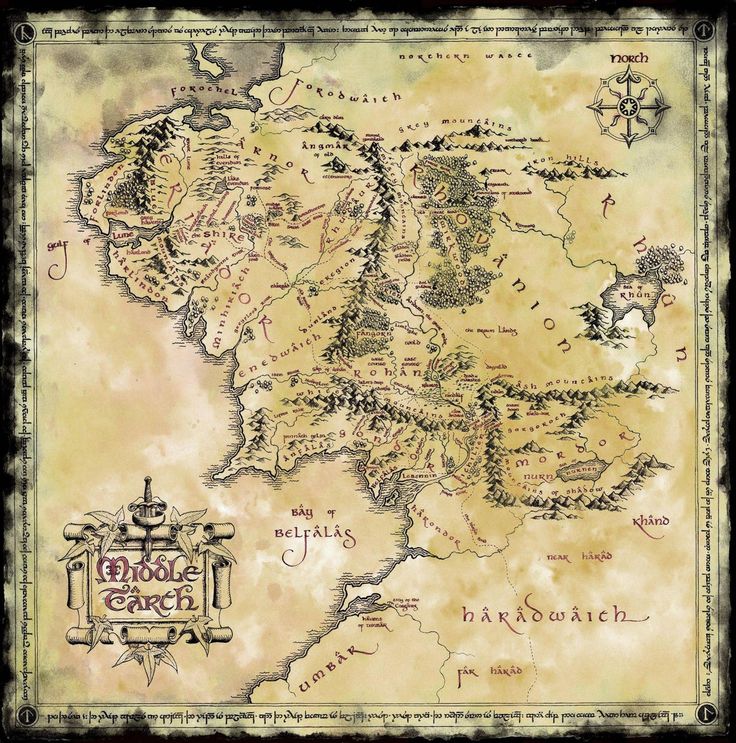
Middle-Earth doesn't have a fantasy China, thank goodness. Rhûn is not it.
Middle-Earth does have Easterlings and Southerlings, who fall prety to Tolkein's very (side-eye) tendency to create "100% evil, all-aligned-with-Sauron-all-the-time" cultures.
Thanks to the complete lack of details given about either race, we don't have to imagine Easterlings as Asians or Southrons as Africans/Arabs -- I'd prefer not to -- but it's hard to escape Tolkien's constant association of "fair" skin with good guys and "swarthy" skin with bad guys, so... let's move on
Narnia
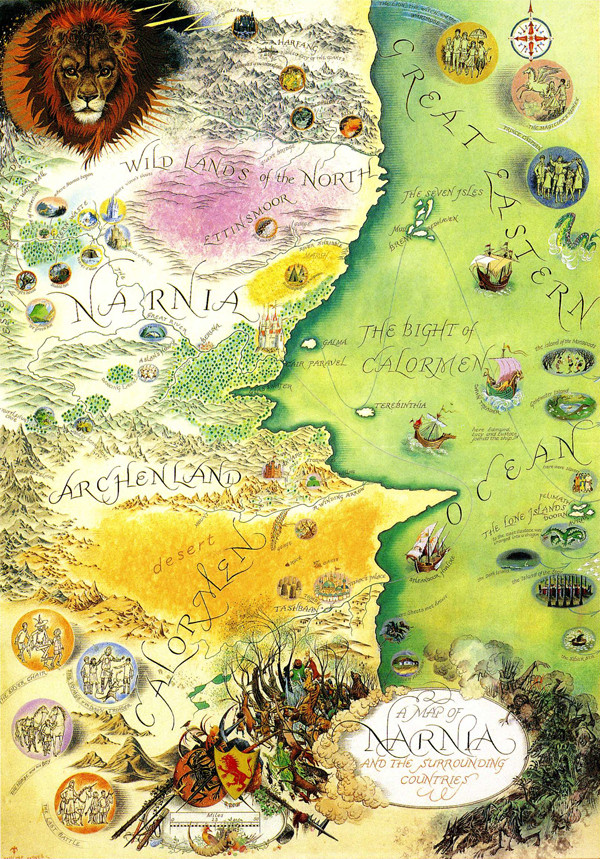
Narnia doesn't have a Not-China either (and is highly unusual among fantasy not-Europes in having an east coast instead of a west coast). But it does have a Not-Arabia, "Calormen", and it's a terrible place where they worship the god Tash who is, in C.S.Lewis's cosmology, objectively evil.
(there's a scene where the one good Tash-worshipper is sad that he's gonna go to hell but Aslan comforts him, saying "if you did good then you weren't really worshipping Tash you were worshipping me" and like even as a kid who didn't know the history of Christian - Muslim relations, I could tell there was something incredibly condescending about that scene)
Why keep doing this?
I'm not saying it's bad to have a fantasy China... it's just that fantasy worldbuilders who seem to be able to invent a lot of imaginative details for their fantasy not-Europe suddenly lose their imagination when it comes to not-China
(or not-Arabia, not-Russia, not-Mesoamerica, not-Transylvannia...)
and fall back on stereotypes to fill on those areas.
And it's not even that stereotypes are offensive, although they may very well be... it's that they're incredibly boring. Fantasy Not-Chinas have neither the interest of an original fantasy creation nor the richness and history of real China. They're just kinda... why even create a fantasy world if you're just going to fill it with less-interesting copies of real places?
(I know, I know, it's because one person in your D&D group wants to play a Kung Fu master and needs a place for their character to "be from"... that's it, isn't it? That's the entire amount of thought that goes into this?)
How does China do fantasy China?
Fantasy written by and for Chinese people (wu xia, etc) doesn't typically make up alternate-worlds; that's a specifically Tolkein-derived thing. Chinese fantasy stories are typically just set in China, in the past, with more or less historical specificity depending on the author, and the martial-arts chi powers dialed up to 11.
(Although... my wife tells me that Chinese gay romance fantasy The Untamed is set in a vaguely defined fantasy world instead of in the real China. Which makes me wonder... is there an Untamed world map? Does it have a crappy Europe shoved off in one corner? Alas, if there's a world map, I can't find it.)
Having elves, dwarves, goblins etc. is a very bad match for the kind of fantasy that has real-world analogue nations. Nobody wants the implications of having your Goblin Horde nation correspond to a real-world nation, right? (Yikes). But it's pretty weird to populate Fantasy Not-China with equal proportions of Not-Chinese Elves, Not-Chinese Goblins, etc.
Really all those short and pointy-eared fellers ought to stay in Tolkien world, where they've got defined roles in the worldbuilding. You can't just toss 'em in "because fantasy". An 1001-nights inspired fantasy world or a wu-xia inspired fantasy world, done right, has its own cosmology, with its own logic, incompatible with orcs and hobbitses. Pick one.
Can it be done well?
Yes.
![]()
As with so many things, Avatar shows how to do it right.
No one of the four nations "is" China -- which takes the pressure off since nothing has to stand in 1-to-1 for a real-world country. Instead the nations have various relations to each other while all sharing a kind of greater-Sinosphere cultural context. It works because it's the focal point of all the world-building, not an appendage stuck on the east end of something else.
Furthermore each nation has internal diversity! Each one has characters with varied and nuanced relationships to their own cultures, differences of opinion, and so on. Nobody is a flat stereotype of foreign-ness. Stuff borrowed from real-life Asian cultures is integrated into the worldbuilding as cultural practices that make logical sense as adaptations to local conditions.
So it's not like you can never have fantasy China, you just have to... how do I put this... make it feel like home to the people who live there. Which is the opposite of the "random bag of exotic signifiers" approach. No place is really "exotic", every place is home to somebody.
=========
Let me leave you with this spot-on parody map, the "Only Fantasy Map You'll Ever Need":
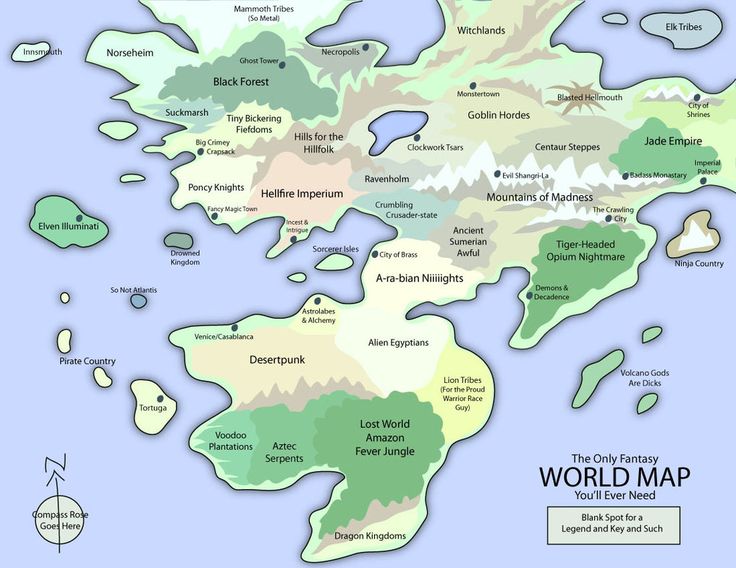
"Tiger-Headed Opium Nightmare", indeed.

